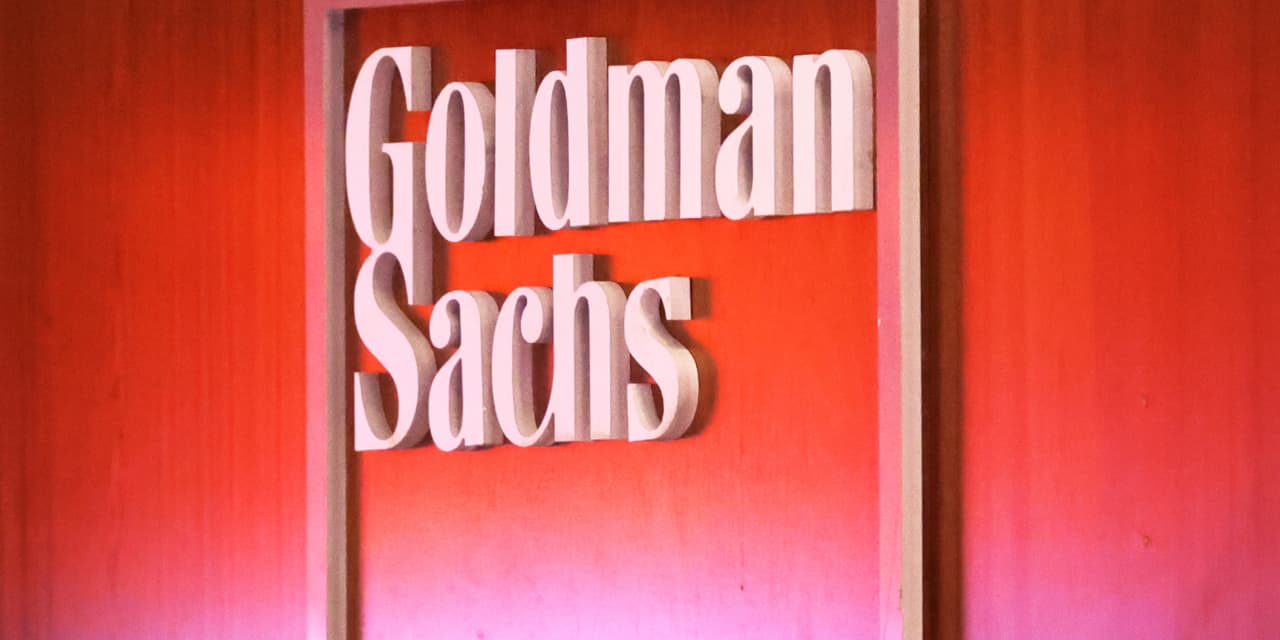It generally has paid to buy Goldman Sachs stock at book value, and investors now have that opportunity.
Goldman Sachs Group
(ticker: GS) said Tuesday it earned $5.47 a share in the third quarter, a figure in line with expectations. Book value came in at nearly $314 a share, up more than $4 from the second quarter, while the stock was down 1% at $311.38 near midday.
With the stock price a touch below book value—what the bank would be worth in a theoretical liquidation—investors now are effectively paying nothing for Goldman’s franchise. That includes its market-leading investment banking business, top-tier trading operation, and a growing and underappreciated asset-management arm.
The stock is off about 10% this year. That puts it behind industry leader
JPMorgan Chase
(JPM), archrival Morgan Stanley (MS), and the overall market as measured by the S&P 500, but well ahead of most bank stocks, which are down nearly 25% on average.
The stock traded below book during 2020, which proved to be a good time to buy it. Now, the shares may represent an inexpensive way to benefit from a revival of investment banking, including mergers and acquisitions, and the success of Goldman’s initiatives to boost Goldman Sachs Asset Management (GSAM) including a big push into alternatives.
The shares also look inexpensive, trading for nine times next year’s projected earnings of about $35 a share, although Goldman’s profits are tough to predict.
CEO David Solomon was cautiously optimistic on a Tuesday call to discuss the results, saying he was “encouraged” about a “wider recovery in capital markets” and progress at GSAM.
Book value is relevant at Goldman because the assets on its balance sheet are highly liquid, consisting largely of cash and marketable securities. A more conservative measure of shareholder equity—tangible book value, which excludes goodwill and other intangible assets—stood at $292 a share at the end of the third quarter. The stock is less than 10% above that level.
So why is Goldman trading so cheaply? The bank’s returns have been anemic and valuations of financial stocks are correlated to them.
The firm earned a 7.1% return on equity in the quarter and 7.6% for the first nine months of 2023. Those figures are about half the firm’s annual target of 14% to 16% over an economic cycle and way below the 18% earned by JPMorgan in the latest quarter. Not surprisingly. JPMorgan trades for a premium to Goldman at about 1.5 times book value.
Goldman called out some special factors that it said reduced its ROE in the latest quarter by about three percentage points, notably a swing to a loss of about $200 million in the firm’s equity investments. It also cited losses related to its exit from its ill-fated investment in the Greensky consumer-lending platform.
But even an adjusted 10% ROE isn’t great for a franchise of Goldman’s caliber. The latest results highlight the volatility of Goldman’s earnings, a second factor that depresses the stock’s valuation.
Morgan Stanley has more stable returns due to its big retail brokerage platform. It trades for a premium to Goldman at twice tangible book value.
Goldman’s third-quarter profits were down 34% from the year-earlier period. The bank is expected to earn around $24 a share this year, down from $30 in 2022 and a record $59 in 2021.
Results this year have been depressed by the exits from some consumer businesses. Still, the firm would need to earn about $45 a share annually to hit its 15% ROE target. It seems nowhere near that goal: Analysts are calling for about $35 a share in earnings next year.
Nonetheless, there are some positives at Goldman. The bank had unrealized losses on its bondholdings—the result of declines in prices that have come as the Federal Reserve has raised interest rates—of about $2 billion at the end of the second quarter. That compares with more than $100 billion at
Bank of America
(BAC).
And it doesn’t rely on retail deposits to fund its business, so it doesn’t face pressure on its margins from offering better yields to keep customers from moving their money elsewhere. The firm’s risk management has long been excellent.
This could be a good time for an institutional franchise like Goldman. Although the firm remains hostage to the investment-banking cycle and the unpredictability of a big trading business, those negatives seem well discounted in the cheaply priced stock.
Write to Andrew Bary at [email protected]
Read the full article here













